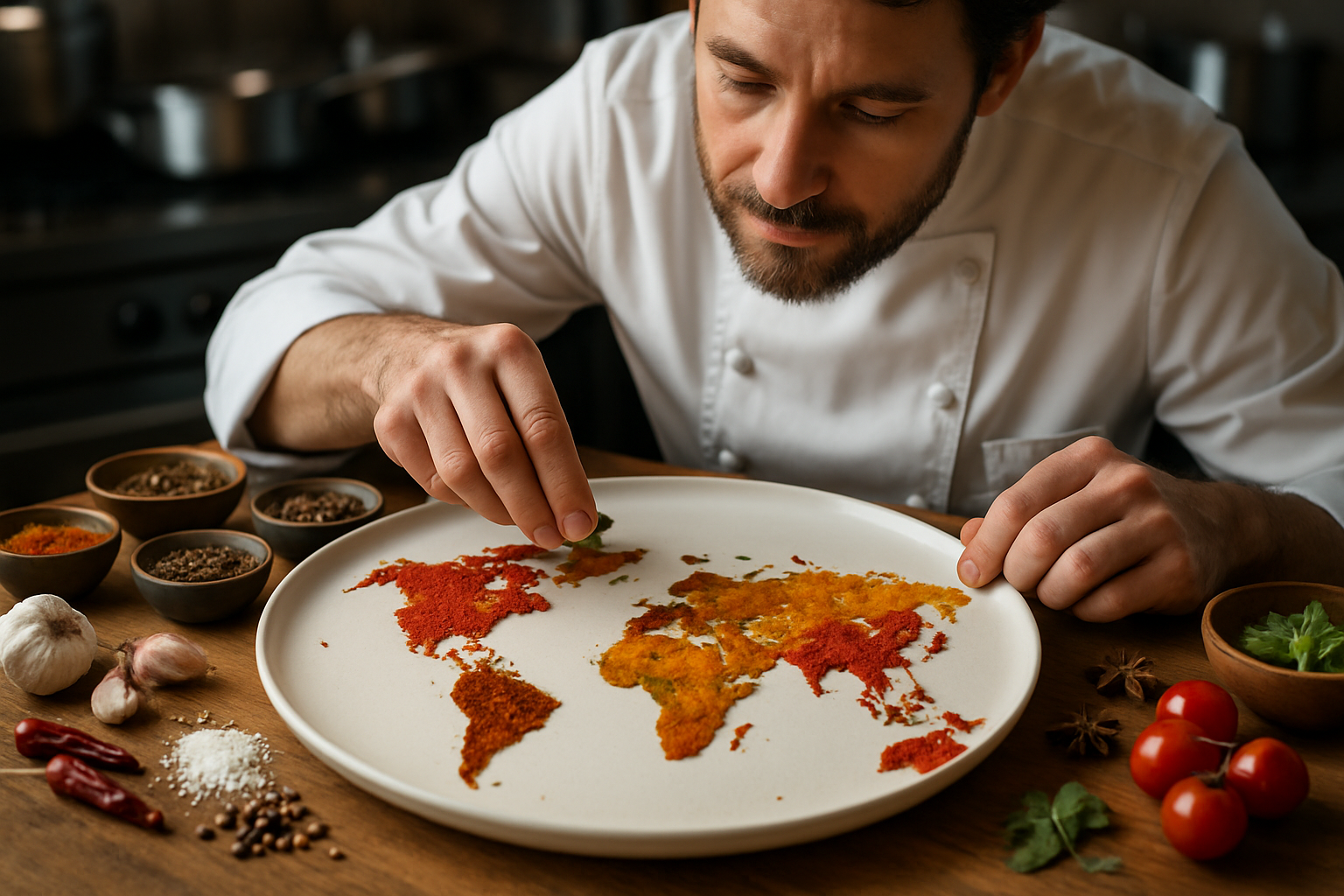Culinary Alchemy: The Art of Flavor Pairing
Discover the science and magic behind unexpected flavor combinations that will revolutionize your cooking. From sweet and savory mashups to intriguing herb and spice pairings, this guide will empower you to create unforgettable dishes that tantalize the taste buds and challenge culinary conventions.

Sweet Meets Savory
One of the most exciting frontiers in flavor pairing is the intersection of sweet and savory. This combination challenges our palates and creates a complex taste experience that can be truly unforgettable. Consider the classic pairing of bacon and maple syrup – the salty, smoky flavor of the bacon is beautifully balanced by the sweet, caramel notes of the syrup. This principle can be extended to create unique dishes like salted caramel ice cream, chocolate-covered potato chips, or even savory fruit tarts. The key is to find the right balance, allowing each element to complement rather than overpower the other. Experimenting with sweet and savory combinations can lead to surprising and delightful culinary discoveries.
Herbs and Spices: The Flavor Enhancers
Herbs and spices are the unsung heroes of flavor pairing, capable of transforming a dish from ordinary to extraordinary. The right combination can elevate simple ingredients to new heights, creating depth and complexity in even the most basic recipes. For instance, the earthy warmth of cumin pairs beautifully with the bright acidity of lime, a combination often found in Mexican cuisine. Similarly, the anise notes of tarragon complement the sweetness of shellfish, creating a harmonious balance in French seafood dishes. By understanding the flavor profiles of different herbs and spices, cooks can create unique blends that add personality and intrigue to their culinary creations.
Global Fusion: Cross-Cultural Flavor Pairings
As our world becomes increasingly interconnected, so too does our cuisine. Global fusion offers endless possibilities for innovative flavor pairings that transcend cultural boundaries. Imagine combining the umami-rich miso of Japanese cuisine with the smoky chipotle peppers of Mexican cooking, or blending Indian curry spices with Italian pasta dishes. These cross-cultural pairings not only create exciting new flavors but also celebrate the diversity of global cuisines. By exploring ingredients and techniques from different culinary traditions, chefs can create dishes that are truly unique and reflective of our interconnected world.
The Role of Texture in Flavor Pairing
While much of flavor pairing focuses on taste, texture plays an equally important role in creating a memorable dining experience. The contrast between crunchy and creamy, or smooth and chewy, can enhance the overall perception of flavor. Consider the popular combination of chocolate and peanut butter – not only do their flavors complement each other, but the contrast between the smooth chocolate and the slightly gritty peanut butter creates an irresistible textural experience. Similarly, adding crispy elements to a creamy soup or incorporating chewy dried fruits into a crunchy salad can elevate the dish by engaging multiple sensory experiences simultaneously.
Useful Tips & Facts
• The flavor pairing theory suggests that foods sharing flavor compounds are likely to taste good together.
• Umami, the fifth basic taste, can be enhanced by pairing umami-rich foods like tomatoes and mushrooms.
• Contrasting flavors, like sweet and sour, can create balance and depth in a dish.
• Consider the intensity of flavors when pairing – strong flavors can overwhelm subtle ones.
• Experiment with temperature contrasts, such as warm desserts with cold ice cream, for added interest.
• Use aromatic ingredients to enhance the overall flavor experience through smell.
• Don’t forget about color – visually appealing combinations can enhance the perception of taste.
Mastering the art of flavor pairing opens up a world of culinary possibilities. By understanding the science behind taste, exploring unexpected combinations, and drawing inspiration from global cuisines, you can create dishes that are not only delicious but also innovative and exciting. Remember, the most important rule in flavor pairing is to trust your palate and be willing to experiment. With practice and creativity, you’ll discover combinations that surprise and delight, elevating your cooking to new heights. So go ahead, challenge conventions, and let your culinary imagination run wild – the next great flavor pairing could be just one unexpected combination away.





